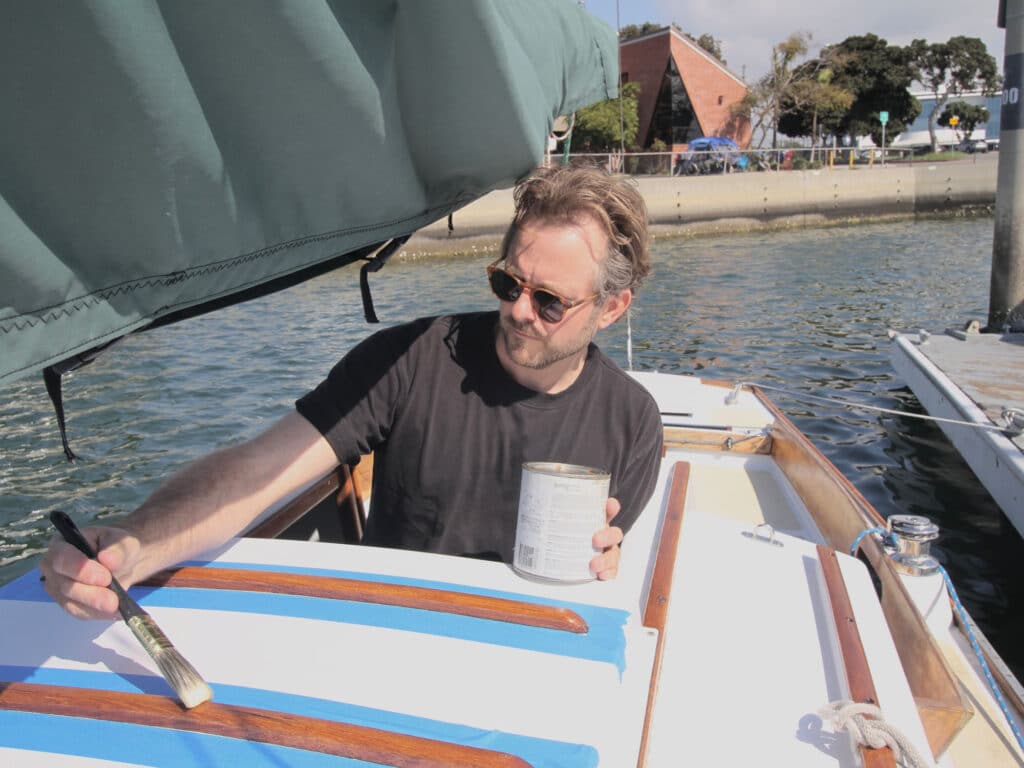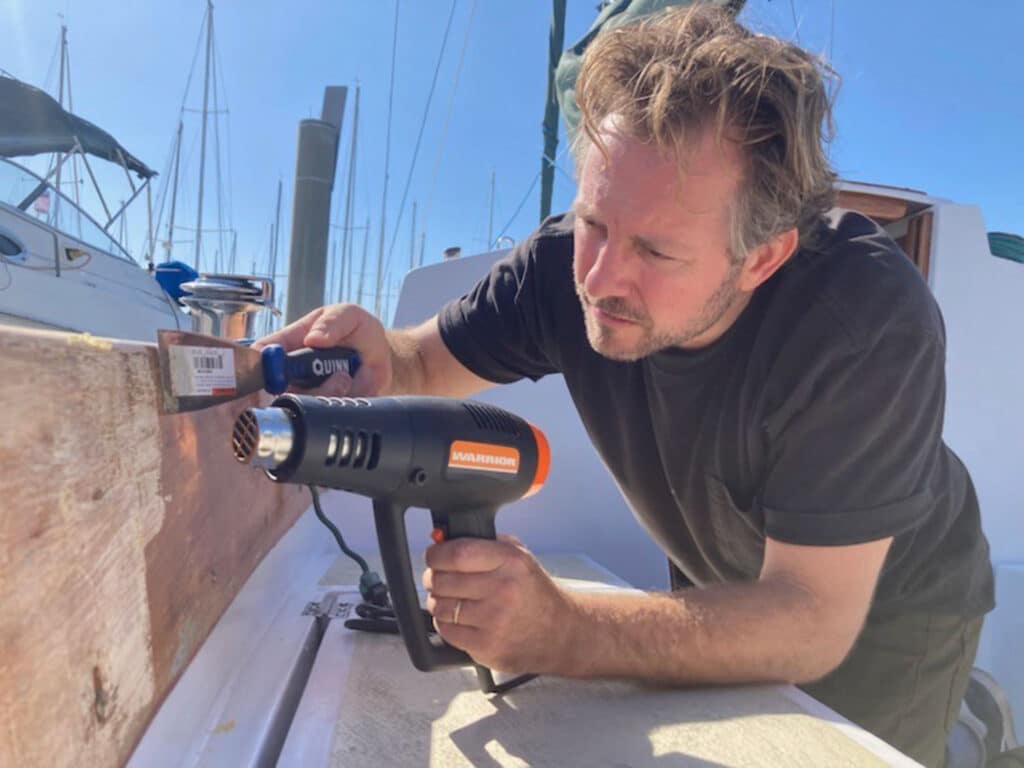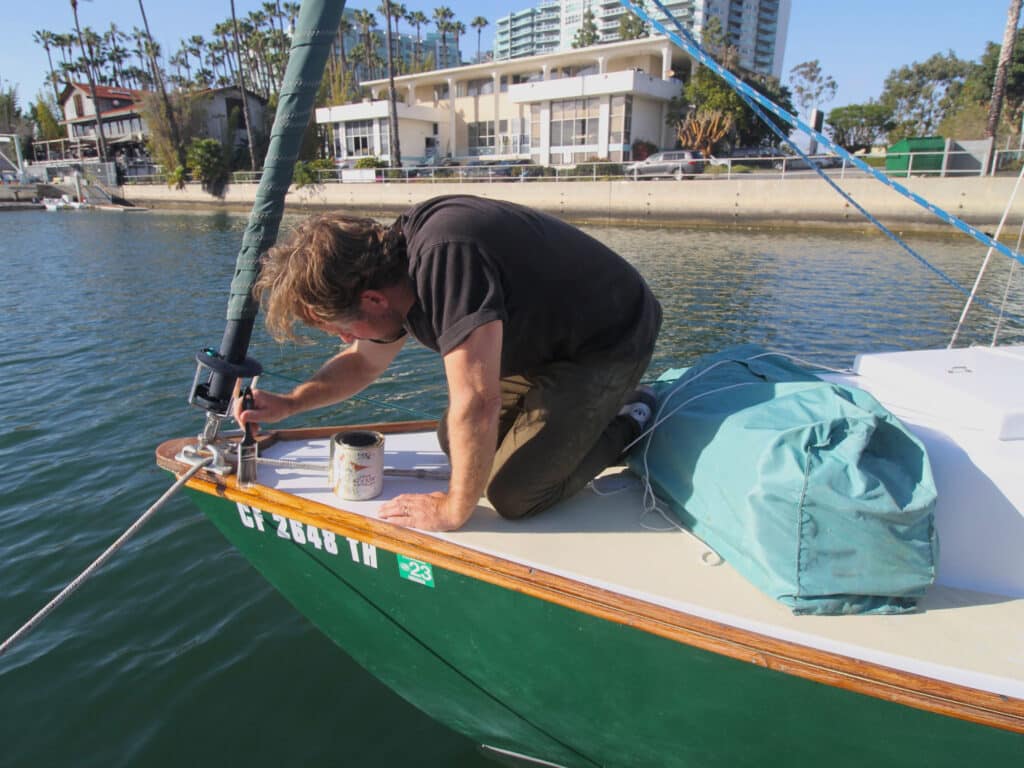
I was at the marina recently, prepping Delilah‘s sunburned, 50-year-old teak for varnish. It was Tuesday morning in Los Angeles and, for a few precious moments, I was showing all the signs of a competent, mechanically capable man who can do his own boat work.
One foot on the dock, the other on the boat, I leaned, reached and began to remove a small section of old varnish from Delilah‘s toe rail. But, as the boat drifted on its dock lines, my reaching turned to stretching; stretching turned to an ever-widening, yoga-like stance; and, soon, I was doing my closest approximation of the splits. I fell on the boat. My heat gun fell in the drink. Birds scattered as a small, high-pitched scream came out of me.
And this, friends, was Day One of my teak maintenance experience.
Over the following days and weeks, small failures turned to fiasco as I assembled a growing list of mishaps, silly mistakes and minor middle-aged injuries. After stripping, sanding and cleaning the toe rail, handrails and cabin top trim, I left my freshly-prepped teak uncovered in the rain. Does it rain in LA? Yeah, it poured for a week. When the storm was over, I removed my blue tape and pulled off large sections of deck paint. I slipped up and scratched Delilah‘s hull with a palm sander, and I drained an entire tin of acetone in my dock box.
Can you see a pattern? I could, and it drove me nuts.

Truth was, my work was amateur at best. Delilah‘s teak would probably never look as good as the day I bought her. Also, I live 25 miles from the marina. In LA traffic, it takes me approximately 16 hours to get to the boat. Sure, I was halfway through the toe rail and trim, but I hadn’t even started on the cockpit combings.
“How’s it going?” a dock mate asked.
I’d been off-and-on at the project for two weeks, was finishing my third coat of varnish, and listening to dangerous amounts of Emo.
“The boat’s looking good,” he said. “You wanna take a break and come sailing with us?”
We raced around the buoys that evening. On the final stretch, maybe 300 yards from the finish line, the wind shut off and we were becalmed. As the sun disappeared, I held a limp jib sheet and remembered a passage from a Robert Pirsig book: “Zen is the spirit of the valley, not the mountaintop,” he wrote. “The only zen you find at the top of a mountain is the zen you bring up there.”
Back at the dock, I cleaned up my tools in the dark, then slept on the boat. In the morning, I walked to coffee and got an early start on my fourth coat of varnish. Only, this time, I opened the wrong can and brushed on the wrong product. Blame the universe? Blame others? Blame myself? Truth was, the spilled acetone had taken the labels off the cans.

I keep a book of poetry on the boat. Sometimes I read it. Sometimes it’s a photo prop. This time, it was a self-help kit. “We are so achievement-oriented that we often surge right by the true value of relating to what’s before us,” Mark Nepo writes, “because we think that accomplishing things will complete us, when it is experiencing life that will.”
A week earlier, I might have cried over the mistake. But this time, I stopped, looked around and laughed. On a nearby dock, sea lions were waking; a small family of ducks was floating past. In the trees, birds chirped. All around me, there was light, air, moving water, the miracle of life.
I sat down, smiled, and watched the varnish dry. After all, what could be better?
Click here to read more from The Noob Files
David Blake Fischer is a “noob” sailor living in Southern California whose work has appeared in McSweeney’s, BuzzFeed, the Moth, and Good Old Boat. He hasn’t crossed oceans. In fact, he’s only recently crossed the Santa Monica Bay. Follow him as he fumbles out the channel, backwinds his jib and sometimes drags his fenders on Delilah, his Cape Dory 25. Stalk him on Instagram.








